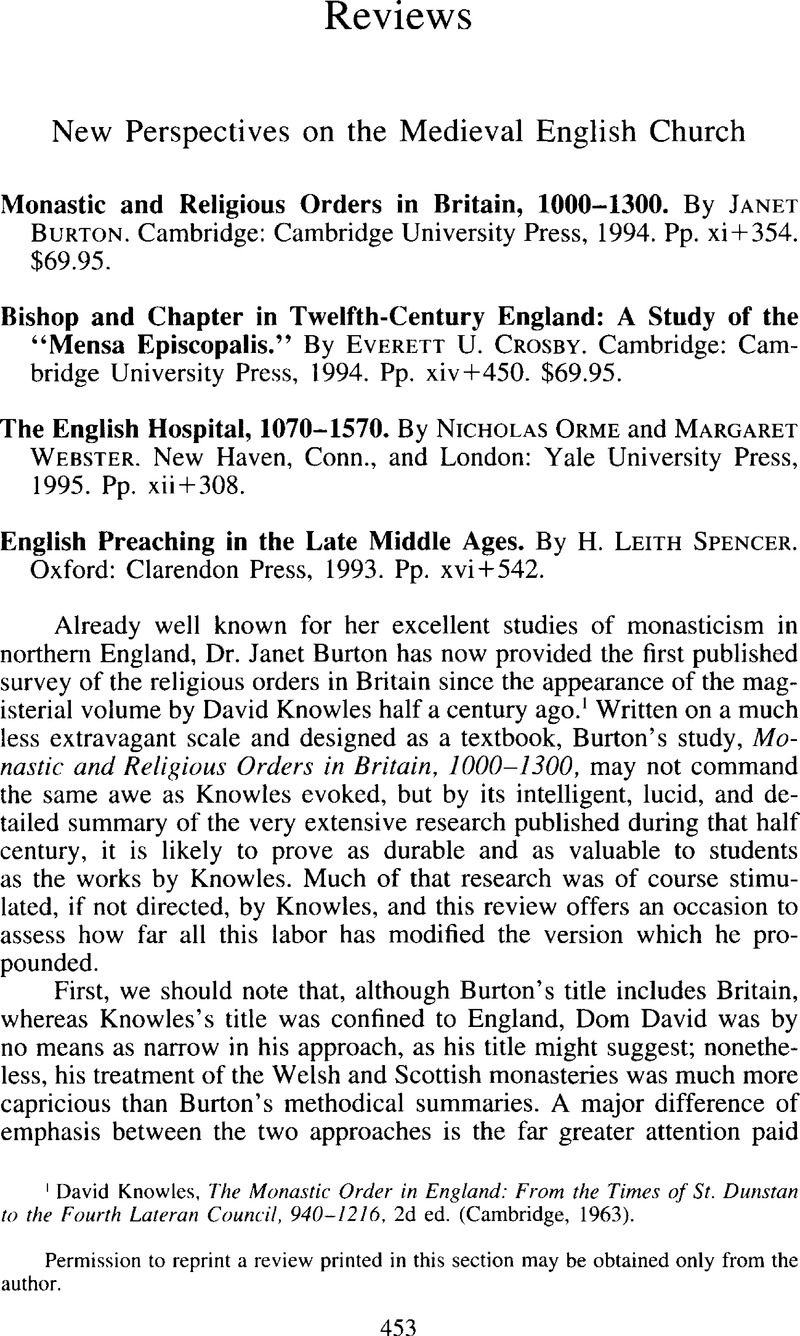No CrossRef data available.
Article contents
New Perspectives on the Medieval English Church - Monastic and Religious Orders in Britain, 1000–1300. By Janet Burton. Cambridge: Cambridge University Press, 1994. Pp. xi+354. $69.95. - Bishop and Chapter in Twelfth-Century England: A Study of the “Mensa Episcopalis.” By Everett U. Crosby. Cambridge: Cambridge University Press, 1994. Pp. xiv+450. $69.95. - The English Hospital, 1070–1570. By Nicholas Orme and Margaret Webster. New Haven, Conn., and London: Yale University Press, 1995. Pp. xii+308. - English Preaching in the Late Middle Ages. By H. Leith Spencer. Oxford: Clarendon Press, 1993. Pp. xvi+542.
Review products
Published online by Cambridge University Press: 10 January 2014
Abstract

- Type
- Reviews
- Information
- Copyright
- Copyright © North American Conference of British Studies 1997
References
1 Knowles, David, The Monastic Order in England: From the Times of St. Dunstan to the Fourth Lateran Council, 940–1216, 2d ed. (Cambridge, 1963)CrossRefGoogle Scholar.
2 Harvey, Barbara, Living and Dying in England, 1100–1540: The Monastic Experience (Oxford, 1993)Google Scholar.
3 Reynolds, Susan, Fiefs and Vassals: The Medieval Evidence Reinterpreted (Oxford, 1994)Google Scholar.
4 Prescott, Elizabeth, The English Medieval Hospital, 1050–1640 (Melksham, 1992)Google Scholar.
5 Owst, G. R., Preaching in Medieval England (Cambridge, 1926)Google Scholar, and Literature and the Pulpit (Cambridge, 1933Google Scholar; 2d ed., Oxford, 1961).
6 For John Pecham's Ignorantia sacerdotum, see Powicke, F. M. and Cheney, C. R., eds., Councils and Synods II: 1205–1313; Part ii: 1265–1303 (Oxford, 1964), 2, pt. 2:900–905Google Scholar. John, Mirk'sFestial was edited by the Early English Text Society, extra ser., no. 96 (Oxford, 1905)Google Scholar. Thomas Arundel's Provincial Constitutions were printed in Wilkins, D., Concilia Magnae Britanniae et Hiberniae (London, 1737), 3:314–19Google Scholar.
7 See Blake, N. F., ed., Quattuor Sermones Printed by William Caxton (Heidelberg, 1975)Google Scholar. On the Somme le roi, see Pantin, W. A., The English Church in the Fourteenth Century (Cambridge, 1956), p. 225Google Scholar. Also see the Book Entitled and Named Royal (Rectius Westminster, 1486)Google Scholar, printed by William Caxton. Various editions of the Shepherds' Kalendar were printed by Pynson, de Worde, and Notary in the first two decades of the sixteenth century.


